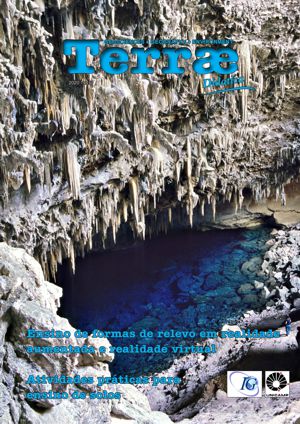Abstract
My argument in this article, will be that nature, in general, and human nature in particular, suggests that, in principle, it is possible to derive the causal time arrow from several physical time arrows existing in nature and appearing to be unidirectional and irreversible phenomena. A more concrete argument will be that the assumption of a causal time arrow to which geologists resort in all geo-historical explanations, apparently originates in geo-historical time arrows concealed in unidirectional and irreversible physical-geological processes. I will illustrate this claim with a few examples of geo-historical explanations in the theory of plate tectonics, most of which are based on irreversible geo-physical processes. My final argument is a broader, of an epistemological nature, according to which the causal time arrow assumption used in logical-causative explanations in everyday life and in science, apparently “derives” in a way from the geo-historical time arrow. I will base this argument on the causal relationship and mutual influence that occurs in nature between geo-historical and evolutionary processes in animals, including developmental processes of the human brain and mind. From this reductionist argument, nicely integrated in the framework of evolutionary epistemology (EEM), it is possible to derive a wider naturalistic argument according to which, on principle, the laws of geo-historical physics can be reduced to the laws of logic and causality.
References
Baker, V. R. (2014). Terrestrial analogs, planetary geology, and the nature of geological reasoning. Planetary and Space Science 95, 5-10. doi: 10.1016/j.pss.2012.10.008.
Barnes, J. (1990). The Toils of Scepticism. Cambridge University Press, Cambridge,161 p.
Bergmann, S. H. (1972). Introduction to the Theory of Knowledge. The Hebrew University Magnes Press, Jerusalem. 318p.
Bonjour, L. (2009). Epistemology: Classic Problems and Contemporary Responses. Rowman & Littlefield Publishers, Inc., Lanham, Maryland. 331p.
Bradie, M., Harms, W. (2015). Evolutionary epistemology. In Zalta, E. N. (Ed.). (2015). Stanford Encyclopedia of Philosophy. http://plato.stanford.edu/archives/sum2015/entries/epistemology-evolutionary/. (Summer 2015 Ed.).
Campbell, D. T. (1974). Evolutionary epistemology. In: Paularthur, S. (Ed.). (1974). The Philosophy of Karl Popper. The Library of Living Philosophers, Inc., USA, pp. 413-463.
Chamberlin, T. C. (1890). The method of multiple working hypotheses. Science 15, 92-96.
Chamberlin, T. C. (1897). The nature of multiple working hypotheses. The Journal of Geology, 5, 837-848. doi: 10.1086/607980.
Chamberlin, T. C. (1904). The methods of Earth-Sciences. Popular Science Monthly, 66, 66-75.
Cleland, C. E. (2002). Methodological and epistemic differences between historical science and experimental science. Philosophy of Science 69 (3), 474-496.
Cleland, C. E. (2013). Common cause explanation and the search for a smoking gun. In: Baker, V. R. (Ed.). (2013). Rethinking the Fabric of Geology. Geological Society of America, Special Paper 502, pp. 1-9. doi: 10.1130/2013.2502(01).
Cooper, W. S. (2001). The Evolution of Reason: Logic as a Branch of Biology. Cambridge University Press, Cambridge, UK. 226p.
de Beauregard, O. C. (1963). Le second principe de la science du temps. Paris, Editions du Seuil.
Denbigh, K. G. (1989). The many faces of irreversibility. The British Journal for the Philosophy of Science, 40, 501-518.
Engelhardt, W., Zimmermann, J. (1988). Theory of Earth Science. Cambridge, UK, Cambridge University Press. 400p.
Evans, R. (1975). Konrad Lorenz: The Man His Ideas. New York, Harcourt Brace Jovanovich. 301p.
Feldman, R. (2003). Epistemology. New Jersey: Pearson Educ., Inc. 197p.
Gilbert, G.K. (1896). The origin of hypotheses. Science 3, 1-12.
Hempel, C., Oppenheim, P. (1948). Studies in the logic of explanation. Philosophy of Science 15, 135-175 (Reprinted in Hempel, 245-290, 1965a).
Kitts, D. B. (1977). The Structure of Geology. Dallas, SMU Press. 199p.
Kenaz, Y. (2010). Descartes, a Discourse on the Method (in Hebrew). The Books in the Attic Press, Tel-Aviv, Israel, 123 p.
Kravitz, G. (2012). Basic Assumptions of Geo-historical Thinking [Ph.D. dissertation].University of Haifa, Department of Philosophy, Haifa, Israel, 255 p (in Hebrew).
Kravitz, G. (2013). The thermodynamics time arrow and the logical function of the uniformity principle in geohistorical explanation. In: Baker, V.R. (Ed.), Rethinking the Fabric of Geology. Geological Society of America, Special Paper 502, pp. 19-40. doi: 10.1130/2013.2502(03).
Kravitz, G. (2014). The geohistorical time arrow: from Steno’s stratigraphic principles to Boltzmann’s past hypothesis. Journal of Geoscience Education 62, 691-700.
Peirce, C. S. (1867). On the natural classification of arguments. Proceedings of the American Academy of Arts and Sciences 7, 261-287.
Peirce, C. S. (1883). A theory of probable inference. In: Peirce, C.S. (Ed.), The Johns Hopkins Studies in Logic. Little and Brown and Co, Boston, pp. 126-181.
Poirier, J. P. (2000). Introduction to the Physics of the Earth’s Interior. Cambridge, Cambridge University Press. 312p.
Romano, M. (2015). Reviewing the term uniformitarianism in modern Earth Sciences. Earth Science Reviews, 148, 65-76.
Schumm, S. A. (1998). To Interpret the Earth: Ten Ways to Be Wrong. Cambridge University Press, Cambridge. 144p.
Stewart, J. A. (1990). Drifting Continents & Colliding Paradigms. Indiana University Press, USA. 285p.
Turcotte, D. L., Schubert, G. (2002). Geodynamics. New York, Cambridge University Press. 456p.
Yovel, Y. (2013). Immanuel Kant-critique of Pure Reason. Hakibbutz Hameuchad-Sifriat Poalim, Tel-Aviv. 654p. (in Hebrew, Translated with Introduction and Notes by Yirmiyahu Yovel).

This work is licensed under a Creative Commons Attribution-NonCommercial 4.0 International License.
Copyright (c) 2020 Terrae Didatica

